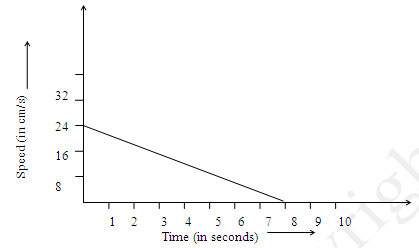Download CBSE Science Guess Paper IX (9th) 2007
Guess Paper – 2007
Science
Class – IX
(Set-4)
Max.Marks:80 Time: 3 hours
General Instructions:
1. The question paper comprises of two sections, A and B. You are to attempt both the sections.
2. The candidates are advised to attempt all the questions of Section A separately and questions of Section B separately.
3. All questions are compulsory.
4. There is no overall choice. However, internal choice has been provided in some questions. You are to attempt only one option in such questions.
5. Marks allocated to every question are indicated against it.
SECTION A
1. The atomic number of an element is 9. Write down its electronic configuration and valency. 1
2. State the law of conservation of energy. 1
3. Express the temperature 82 K on Celsius scale. 1
4. Write down the unit of ‘g’ and ‘G’? 1
5. A bullet initially moving with a velocity of 20m/s strikes a target and comes to rest after penetrating a distance of 0.01m in the target. Calculate the retardation produced by the target. 2
6. (a) State the law of conservation of mass.
(b) 0.8 g of phosphene gas on decomposition yielded 0.375 g of phosphorus and 0.325 g of hydrogen. Show that these data is in agreement with the above law. 2
OR
(a) Define atomicity. Write down the atomicities of (i) Sodium (ii) Ozone
(b) A certain metal carbonate has the formula MCO3. Find the chemical formula of its sulphide. 2
7. Give reasons: 2
(a) The rate of diffusion of liquids is higher than that of solids
(b) Steam produces more severe burns than boiling water.
8. Give the ranges of frequencies of ultrasound and infrasound. Also mention 2 applications of ultrasound. 2
9. (a) What modifications did Bohr introduce in his atom model?
(b) What are isotopes? Name two isotopes of carbon. Give 2 medical applications of isotopes. 3
10. (a) Distinguish between mass and weight.
(b) Calculate the mass of an object whose weight is 49 N.
(c) A nail made of iron sinks in water but a cork floats on it. Why? 3
11. (a) Derive the expression for potential energy of a body due to its height
(b) A car weighing 1000 kg decelerates uniformly at 5m/s2 and stops at a distance of 50 m. Calculate the work done by the brakes. 3
OR
(a) Define the S.I. unit of work
(b) A 1000 W electric geyser is used for 2 hours daily. How many units of electrical energy does it consume in 30 days?. 3
12. (a) How many molecules of water are there in 1 g of water?
(b) What weight in grams is represented by 5.14 moles of H5IO6? 3
( Given atomic masses of H-1, O-16, I-127)
13. (a) Name the method used to separate colloidal particles. On what principle is it based?
(b) Compare the properties of solutions and suspensions. 3
14. (a) Why are sound waves called mechanical waves?
(b) A ship on the surface of water sends a signal and receives it back after 4 seconds from a submarine inside water. How deep is the submarine from the ship?
(Given speed of sound in water is 1450 m/s.) 3
15. (a) Humus is an important factor in deciding soil structure. Justify?
(b) Write a note on the importance of water in the lives of plants and animals. 5
OR
(a) What are the causes of water pollution?
(b) What is soil erosion? Mention the causes and methods of reducing the same. 5
16. (a) State Newton’s I Law of motion
(b) The V-T graph of a coin moving on a table is given in figure. If the weight of the coin is 10g, how much force does the table exert on coin to bring it to rest?
(c) Two marbles of masses 40g and 60g moving in the same direction with velocities 4m/s and 6m/s on a table undergoes elastic collision. With what velocity do they move if they stick together after collision? 5
SECTION B
17. How does the circulatory system of cockroach differ from that of a man? 1
18. name the causative organism of the following diseases 1
(a) Kala azar
(b) AIDS
19. Differentiate between 2
(a) broilers and layers
(b) mariculture and aquaculture
20. What are vectors? Name a vector with the disease it transmits. 2
21. (a) Who proposed the five kingdom classification? What was the basis for such a classification?
(b) Give two characteristic features of kingdom Monera? 3
22. (a) Compare the chemical composition of the matrix of bone and cartilage.
(b) State the functions of epidermis in plants
OR
(a) Name the type of permanent tissue present in coconut husk
(b) How is this tissue structurally different from parenchyma?
(c) Distinguish between tendon and ligament. 3
23. (a) What is the principle of organic farming?
(b) What are the advantages that manures offer over fertilizers? 3
24. (a) Draw a neat labelled diagram of a plant cell.
(b) Which part of this cell enables it to exist in a hypotonic media without bursting? Explain. 5
Download Attached PDF
- Hindi
(415 downloads)
